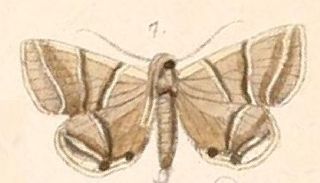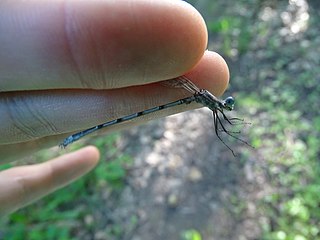
Selenops radiatus is a species of flatty in the spider family Selenopidae. It is found in Mediterranean, Africa, the Middle East, India, Myanmar, and China.

Zopherus gracilis is a species of ironclad beetle in the family Zopheridae. It is found in Central America and North America.

The Herminiinae are a subfamily of moths in the family Erebidae. The members of the subfamily are called litter moths because the caterpillars of most members feed on dead leaves of plants, though others feed on living leaves.
Hobbseus attenuatus, the Pearl riverlet crayfish, is a species of crayfish in the family Cambaridae. It is found in North America.
Hobbseus cristatus is a species of crayfish in the family Cambaridae. It is found in North America.
Hobbseus petilus, the Tombigbee riverlet crayfish, is a species of crayfish in the family Cambaridae. It is found in North America.
Lirceus culveri, the Rye Cove cave isopod, is a species of isopod in the family Asellidae. It is found in North America.

Rejectaria is a genus of litter moths of the family Erebidae. The genus was erected by Achille Guenée in 1854.
Weberia is a genus of parasitic flies in the family Tachinidae. There are at least three described species in Weberia.
Brazilian hemorrhagic fever (BzHF) is an infectious disease caused by Brazilian mammarenavirus, an arenavirus. Brazilian mammarenavirus is one of the arenaviruses from South America to cause hemorrhagic fever. It shares a common progenitor with Argentinian mammarenavirus, Machupo mammarenavirus, Tacaribe mammarenavirus, and Guanarito mammarenavirus. It is an enveloped RNA virus and is highly infectious and lethal. Very little is known about this disease, but it is thought to be transmitted by the excreta of rodents. This virus has also been implicated as a means for bioterrorism, as it can be spread through aerosols.
Siphonorhinidae is a family of millipede in the order Siphonophorida. There are at least 4 genera and about 12 described species in Siphonorhinidae.
Siphonophoridae is a family of millipede in the order Siphonophorida. There are about 12 genera and more than 110 described species in Siphonophoridae.
Andrognathidae is a family of millipede in the order Platydesmida. There are about 17 genera and more than 30 described species in Andrognathidae.
Platydesmidae is a family of millipede in the order Platydesmida. There are at least 2 genera and more than 30 described species in Platydesmidae.
Evalljapyx hubbardi is a species of forcepstail in the family Japygidae. It is found in North America.

Lestes australis, the southern spreadwing, is a species of spreadwing in the damselfly family Lestidae. It is found in North America.

Lestes disjunctus, the northern spreadwing, is a species of spreadwing in the damselfly family Lestidae. It is found in North America.

Lestes eurinus, the amber-winged spreadwing, is a species of spreadwing in the damselfly family Lestidae. It is found in North America.

Lestes forficula, the rainpool spreadwing, is a species of spreadwing in the damselfly family Lestidae. It is found in the Caribbean Sea, Central America, North America, and South America.

Lestes tenuatus, the blue-striped spreadwing, is a species of spreadwing in the damselfly family Lestidae. It is found in the Caribbean Sea, Central America, North America, and South America.








